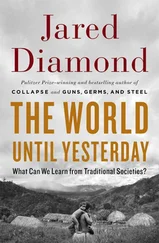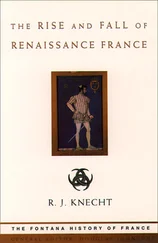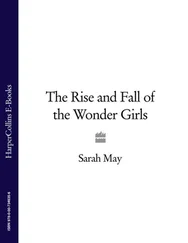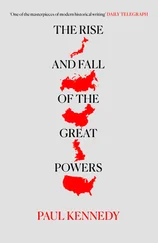Jared Diamond - The rise and fall of the third chimpanzee
Здесь есть возможность читать онлайн «Jared Diamond - The rise and fall of the third chimpanzee» весь текст электронной книги совершенно бесплатно (целиком полную версию без сокращений). В некоторых случаях можно слушать аудио, скачать через торрент в формате fb2 и присутствует краткое содержание. Год выпуска: 1991, ISBN: 1991, Издательство: RADIUS, Жанр: Биология, на английском языке. Описание произведения, (предисловие) а так же отзывы посетителей доступны на портале библиотеки ЛибКат.
- Название:The rise and fall of the third chimpanzee
- Автор:
- Издательство:RADIUS
- Жанр:
- Год:1991
- ISBN:0-09-174268-4
- Рейтинг книги:4 / 5. Голосов: 1
-
Избранное:Добавить в избранное
- Отзывы:
-
Ваша оценка:
- 80
- 1
- 2
- 3
- 4
- 5
The rise and fall of the third chimpanzee: краткое содержание, описание и аннотация
Предлагаем к чтению аннотацию, описание, краткое содержание или предисловие (зависит от того, что написал сам автор книги «The rise and fall of the third chimpanzee»). Если вы не нашли необходимую информацию о книге — напишите в комментариях, мы постараемся отыскать её.
The rise and fall of the third chimpanzee — читать онлайн бесплатно полную книгу (весь текст) целиком
Ниже представлен текст книги, разбитый по страницам. Система сохранения места последней прочитанной страницы, позволяет с удобством читать онлайн бесплатно книгу «The rise and fall of the third chimpanzee», без необходимости каждый раз заново искать на чём Вы остановились. Поставьте закладку, и сможете в любой момент перейти на страницу, на которой закончили чтение.
Интервал:
Закладка:
As for the claim that agriculture laid the foundations of art by providing us with leisure time, modern hunter-gatherers have on the average at least as much free time as do farmers. I grant that some people in industrial and farming societies enjoy more leisure than hunter-gatherers, at the expense of many others who support them and have far less leisure. Farming undoubtedly made it possible to sustain full-time craftsmen and artists, without whom we would not have such large-scale art projects as the Sistine Chapel and Cologne Cathedral. However, the whole emphasis on leisure time as a critical factor in explaining artistic differences among human societies seems to me misguided. It is not lack of time that prevents us today from surpassing the beauty of the Parthenon. While post-agricultural technological advances did make new art forms possible and art preservation easier, great paintings and sculptures on a smaller scale than that of Cologne Cathedral were already being produced by Cro-Magnon hunter-gatherers 15,000 years ago. Great art was still being produced in modern times by hunter-gatherers such as Eskimos and Pacific Northwest Indians. In addition, when we count up the specialists whom society became able to support after the advent of agriculture, we should recall not only Michelangelo and Shakespeare but also standing armies of professional killers.
Thus, with the advent of agriculture an elite became healthier, but many people became worse off. Instead of the progressivist party line that we chose agriculture because it was good for us, a cynic might ask how we got trapped by agriculture despite its being such a mixed blessing. The answer boils down to the adage, 'Might makes right. Farming could support far more people than hunting, whether or not it also brought on the average more food per mouth. (Population densities of hunter-gatherers are typically one person or less per square mile, while densities of farmers average at least ten times higher.) Partly, this is because an acre of field planted entirely in edible crops produces far more tons of food, and allows one to feed far more mouths, than an acre of forest with scattered edible wild plants. Partly, too, it is because nomadic hunter-gatherers have to keep their children spaced at four-year intervals by infanticide and other means, since a mother must carry her toddler until it is old enough to keep up with the adults. Because sedentary farmers do not have that problem, they can and do have a child every two years. Perhaps the main reason we find it so hard to shake off the traditional view that farming was unequivocally good for us is that there is no doubt that it meant more tons of food per acre. We forget that it also meant more mouths to feed, and that health and quality of life depend on the amount of food per mouth. As population densities of hunter-gatherers slowly rose at the end of the Ice Age, bands had to 'choose', whether consciously or unconsciously, between feeding more mouths by taking the first steps towards agriculture, or else finding ways to limit growth. Some bands adopted the former solution, unable to anticipate the evils of farming, and seduced by the transient abundance they enjoyed until population growth caught up with increased food production. Such bands outbred and then drove off or killed the bands that chose to remain hunter-gatherers, because ten malnourished farmers can still outfight one healthy hunter. It is not that hunter-gatherers abandoned their lifestyle, but that those sensible enough not to abandon it were forced out of all areas except ones that farmers did not want. Modern hunter-gatherers persisted only in scattered areas useless for agriculture, such as the Arctic, deserts, and some rainforests. At this point it is ironic to recall the common complaint that archaeology is an expensive luxury, concerned with the remote past, and offering no lessons of present relevance. Archaeologists studying the rise of farming have reconstructed for us a stage where we made one of the most crucial decisions in human history. Forced to choose between limiting population growth or trying to increase food production, we opted for the latter and ended up with starvation, warfare, and tyranny. The same choice faces us today, with the difference that we now can learn from the past.
Hunter-gatherers practised the most successful and long-persistent lifestyle in the career of our species. In contrast, we are still struggling with the problems into which we descended with agriculture, and it is unclear whether we can solve them. Suppose that an archaeologist who had visited us from outer space were trying to explain human history to his fellow spacelings. The visitor might illustrate the results of his digs by a twenty-four-hour clock on which one hour of clock-time represents 100,000 years of real past time. If the history of the human race began at midnight, then we would now be almost at the end of our first day. We lived as hunter-gatherers for nearly the whole of that day, from midnight through dawn, noon, and sunset. Finally, at 11:54 pm we adopted agriculture. In retrospect, the decision was inevitable, and there is now no question of turning back. But as our second midnight approaches, will the present plight of African peasants gradually spread to engulf all of us? Or, will we somehow achieve those seductive blessings that we imagine behind agriculture's glittering facade, and that have so far eluded us except in mixed form?
ELEVEN
WHY DO WE SMOKE, DRINK, AND USE DANGEROUS DRUGS?
Self-destructive chemical abuse by humans has precedents in animal displays that are costly or dangerous to the displaying animal. Such behaviour may have originated from the dilemma that signals available to any individual lend themselves to cheating. But costly or dangerous signals carry a built-in guarantee of honesty and are thus useful—as long as their benefits outweigh their costs. Unfortunately, this old evolutionary framework has gone awry in us.
Chernobyl—formaldehyde in drywalls—asbestos—lead poisoning—smog—the Valdez oil spill—Love Canal—Agent Orange… Hardly a month goes by without our learning of yet another way in which we and our children have been exposed to toxic chemicals through the negligence of others. The public's outrage, sense of helplessness, and demand for change are growing. Why, then, do we do to ourselves that which we cannot stand for others to do to us? How do we explain the paradox that many people intentionally consume, inject, or inhale toxic chemicals, such as alcohol, cocaine, and the chemicals in tobacco smoke? Why are various forms of this wilful self-damage native to many contemporary societies, from primitive tribes to high-tech urbanites, and extending back into the past as far as we have written records?
Like the subjects of the preceding three chapters, drug abuse is also a hallmark virtually unique to the human species, albeit an evil one rather than a noble one (like language and art) or a mixed blessing (agriculture). «is not the worst of our evil hallmarks; it does not threaten the survival of civilization, as do our genocidal tendencies and our environmental destructiveness. But it is still damaging and widespread enough to beg the question of its origins.
The problem is not so much in understanding why we continue to take toxic chemicals once we have started. In part, that is because our drugs of abuse are addictive. Instead, the greater mystery is what impels us to begin at all. Evidence for the damaging or lethal effects of alcohol, cocaine, and tobacco is by now overwhelming and familiar. Only the existence of some strong countervailing motives could explain why people consume these poisons voluntarily, even eagerly. It is as if unconscious programmes were driving us to do something we know to be dangerous. What could those programmes be?
Читать дальшеИнтервал:
Закладка:
Похожие книги на «The rise and fall of the third chimpanzee»
Представляем Вашему вниманию похожие книги на «The rise and fall of the third chimpanzee» списком для выбора. Мы отобрали схожую по названию и смыслу литературу в надежде предоставить читателям больше вариантов отыскать новые, интересные, ещё непрочитанные произведения.
Обсуждение, отзывы о книге «The rise and fall of the third chimpanzee» и просто собственные мнения читателей. Оставьте ваши комментарии, напишите, что Вы думаете о произведении, его смысле или главных героях. Укажите что конкретно понравилось, а что нет, и почему Вы так считаете.












